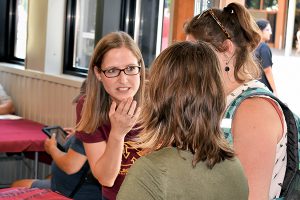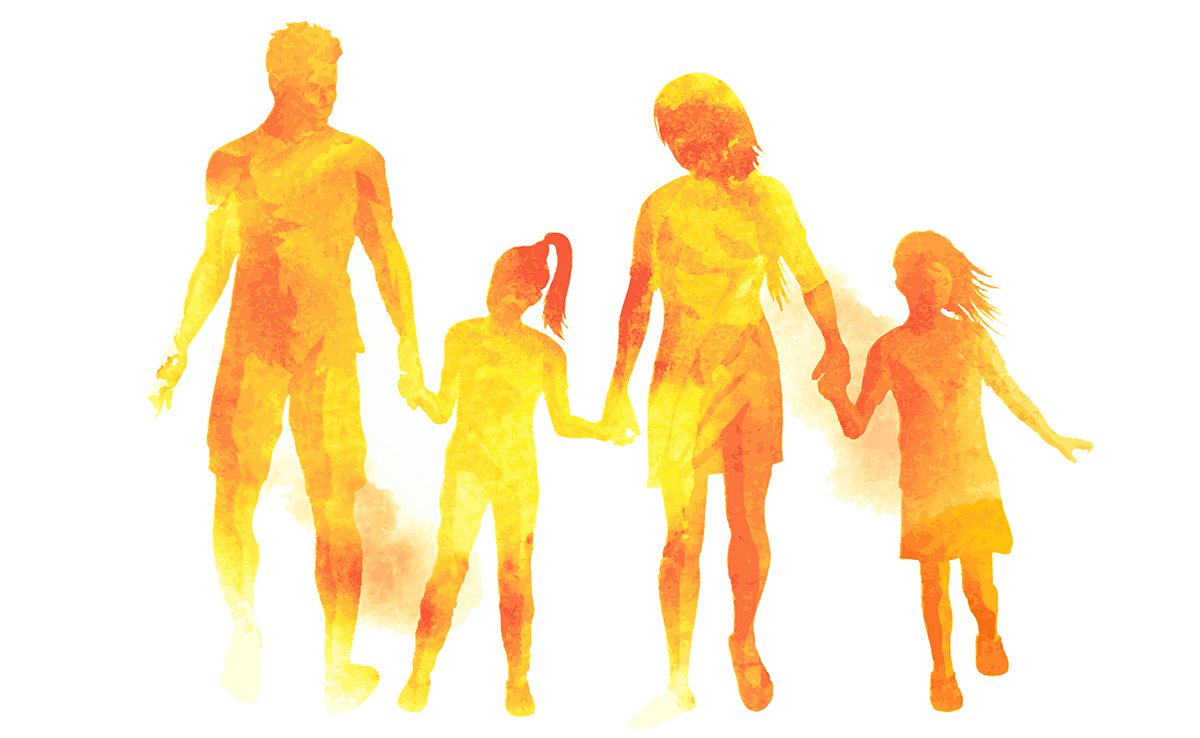In a Twitter-driven, 24-hour-news-cycle culture, taking a long view is not easy. But professor Gerry August, a passionate advocate for children’s mental health, is one who does.
August got to know thousands of children and families during his years as a clinical therapist and director of the University Medical School’s psychological services. He learned that the stigma of mental health issues makes children less likely to share their feelings or seek help.
“Children who struggle with emotional or behavioral difficulties are often embarrassed, ashamed, or humiliated,” says August.
That led him to identify the need for screenings to determine who’s at risk. In the late 1990s, August worked to develop an intervention called Early Riser, which identified children with behavioral and social adjustment problems at the start of kindergarten and delivered a school-based, coordinated package of child and family training and support. Provided over a two- to five-year period, the comprehensive prevention program offered school and family support interventions and skill training that significantly reduced children’s aggressive behaviors while improving social skills and peer relationships.
On the leading edge of developing prevention programs for children, August moved “upstream” to the Department of Family Social Science in 2014. He joined forces with faculty members Abigail Gewirtz, whom he’d previously mentored, along with prevention science researchers Tim Piehler and Lindsey Weiler. Their work led to a new master’s program in prevention science last year that is attracting a new generation in family social science.
Defining prevention science
Prevention science researchers and teachers in family social science are driven to use research to unravel the complex factors that place a child, adolescent, or family at risk and then create interventions that could deflect them from a negative path to a more positive outcome.
They ask questions that spring from their clinical experiences treating children and families. What if I had seen this child, or this family, three years ago? . . . What if we could have intervened earlier—before the effects of a negative event or family trauma fractured the family’s healthy development? . . . What can I do to help?
More specifically, they ask, how can parents, health care professionals, schools, and communities help those who are at a heightened risk for serious mental disorders as well as health-compromising behaviors? How do we identify children who may be at risk due to exposure to trauma or other life-altering events, such as death of a parent, divorce, or abuse? What kinds of preventative intervention programs are available to reduce the impact of harmful experiences? How do individuals, families, and communities develop resilience?
Prevention science encompasses those questions and more. Interdisciplinary and practical, it’s a field of applied research uniting researchers, practitioners, and community health care providers from a variety of sectors to develop, test, and disseminate interventions for those they serve.
An ounce of prevention is worth a pound of cure, the saying goes. Prevention science aims to reduce not just costs but the human toll of crisis after crisis.
Historically, says August, prevention science’s roots were in public health interventions such as municipal water fluoridation and the development of vaccines to combat contagious diseases. It has been most successful in cardiovascular health interventions—prevention programs designed to reduce heart attacks and disease have been embraced and adopted by the public.
“You’re not stigmatized if you have a heart attack,” he notes.
But prevention aimed at mental health issues lags behind, he says, particularly efforts designed for children.
“Prevention science in mental health is challenging because multiple factors can place individuals at risk,” says August. “When children start school, they’re screened for a variety of health issues but not for any possible behavioral or emotional issues that could manifest later. Risk factors are often difficult to identify and may only emerge following a traumatic event, or if the child is rejected by peers, bullied, or experiences some kind of failure.”
Identifying risk factors
Assistant professor Timothy Piehler focuses his research on broad risk factors that trigger the emergence of disorders like substance abuse in adolescents.
“What has led up to that disorder development? What are
the risk factors and possible protective factors?” asks Piehler.
“What’s exciting to me is drawing from diverse sets of knowledge to better understand how we can prevent problems from emerging.”
Piehler is a licensed clinical psychologist who came to the U’s Medical school in child psychiatry in 2011 and then, like Gerry August, moved to family social science in 2014.
His current collaboration with a Twin Cities high school is testing the effectiveness of mindfulness training to reduce school-based aggression and violence. He and his collaborators want to learn whether they can identify narrow neurocognitive modifications and see changes in the way students exercise impulse control and delay gratification.
School staff members are trained by Piehler and his team in mindfulness techniques. Students participate in a group-based program to build skills in increasing emotional awareness while reducing reactivity to negative emotions. Early findings are encouraging.
“We’re identifying students displaying early conduct problems to see if we can help them be more aware of their emotions and reactions and manage them more appropriately,” he explains. “Students seem to like the groups and what’s happening. They’re receptive to learning these types of skills, and it’s rewarding to see them engaging with the material.”
Building a better village
“Everyone has heard the phrase, ‘It takes a village to raise a child,’” says assistant professor Lindsey Weiler. “So how do we create a village when there isn’t one, and how can we create a better village?”
Weiler is a licensed couple and family therapist who joined the family social science faculty in 2014. In addition to teaching, she collaborates on projects with the National Mentoring Resource Center and leads a project funded by the U.S. Department of Agriculture to help youth traumatized in foster care. She’s interested in the impact that adult mentors, formal or informal, can have on children’s well-being.
“There’s been very little research on parents’ role in fostering their children’s social network,” says Weiler.
“We believe informal mentors can be very beneficial for kids and possibly even protect them from negative events in their lives.”
Now Weiler is conducting a multi-year research project on caregiver-initiated mentoring with a team from the University of Arkansas. They met at a national symposium of youth-mentoring researchers convened by Big Brothers Big Sisters of Canada, the National Mentoring Partnership, and a university in Boston.
The symposium message was clear: Current programs and practices in youth mentoring are inadequate, especially for youth from disadvantaged backgrounds. Weiler and her colleagues set out to explore and expand the very definition of mentor.

With surveys and focus groups in the United States and Canada, the team has explored why parents enroll their children in formal and informal mentoring programs and how parents view the benefits and risks of mentors. Their research helped them design a survey conducted during the 2017 Minnesota State Fair showing that parents and caregivers see value in connecting their children with supportive adults but have little experience actually doing it. Parents need help to recruit informal mentors from their communities to “build the better village.”
The team then generated solutions to the recruitment challenge in a Twin Cities-based workshop last fall with parents who are clients of a low-income housing service and with volunteers who serve youth at several community organizations.
“These kinds of collaborations bring multiple perspectives and skill sets to the table,” says Weiler. “The result is a better, more culturally sensitive program that is received and sustained by the community.”
Next steps include fully fleshing out a program, finding community collaborators, and seeking funding partners to help parents and caregivers connect with informal and formal mentors.
“We use research to develop programs that are applicable, acceptable, and effective for people in our communities,” says Weiler. “It’s what we mean when we talk about ‘translational research.’”
Reducing the impact of trauma
The prevention science mantra is identify what works and get it into practice as widely and as quickly as possible.
It’s an aim repeated often by professor Abi Gewirtz, whose father described surviving the London blitz during World War II. Later, as a graduate student in Tel Aviv during the first Gulf War, she saw firsthand the distress of parents and families trying to cope with war-induced trauma. Those experiences instilled in her a powerful urgency to help children and families exposed to violence and trauma.
Today she holds a joint appointment in family social science and the Institute of Child Development.
“There is a body of knowledge that’s grown over the past quarter-century that shows how damaging exposure to violence can be to a child’s development,” says Gewirtz.
“When research, practice, and policy are in sync, important changes can be made to benefit vulnerable children and families.”
In partnership with the U.S. Department of Defense, Gewirtz created the ADAPT program—After Deployment: Adaptive Parenting Tools—designed to help military families reintegrate effectively when a parent returns.
ADAPT is a model of prevention science success: using evidence-based research to create an intervention program that fills a much-needed gap in supporting the mental health and resilience of military families with a deployed parent.
Gewirtz and her one-time mentor, Gerry August, now co-direct the Institute for Translational Research in Children’s Mental Health (ITR). It’s a home for ADAPT, the Early Riser program, the Center for Personalized Prevention Research, and more, drawing on the energy and expertise of colleagues across CEHD and the U.

The next generation
Six U colleges—CEHD, medicine, nursing, public health, public affairs, and liberal arts—collaborated to launch a graduate minor in prevention science at the U in 2009. The Department of Family Social Science is now its academic home, and a master’s program opened in 2017, one of about a dozen in the country.
“It’s a relatively young, multidisciplinary field focused on improving health and well-being,” says Kristen Johnson, coordinator of the master’s program and a prevention science researcher.
“Prevention science equips students with a range of skills and knowledge, from assessment to sustaining a positive impact.”
Graduate students make possible the research of August, Piehler, Weiler, and Gewirtz, working side by side with them and bringing new questions and perspectives.
Cheuk Hei “Bosco” Cheng came into the master’s program and is now pursuing his PhD with Gewirtz as his adviser.
“Prevention-focused research has really helped me see the connection of my work to the purpose of improving the well-being of families,” he says. “It’s been meaningful and helped me to connect back to the whole picture of research.”
Jingchen Zhang is a doctoral candidate with a focus in prevention science. With Piehler, she explored data gathered by the Early Riser program team. With Gewirtz, she and Cheng studied ADAPT’s impact. She’s now devoting more effort to the physiological markers of emotion regulation, such as heart rate variability, to understand how it maps to real-time parent–child interactions.
“I feel grateful for being involved in such a well-designed parenting intervention program and finding the meaning of being a researcher,” says Zhang.
“The transition from working on the basic developmental psychology research to applying the knowledge to parenting intervention studies has been fantastic.”
Solving big challenges will take sustained attention to unpack complex health-risk factors with solid data. It will take smart investments in interventions that prevent major health issues from blossoming into major crises.
With a long view, prevention scientists are working to solve those challenges.
Learn more about the master of arts in prevention science.
Read more about the Department of Family Social Science.
Story by Julie Michener | Photos by Julie Michener (Weiler) and Greg Helgeson | Winter 2019
